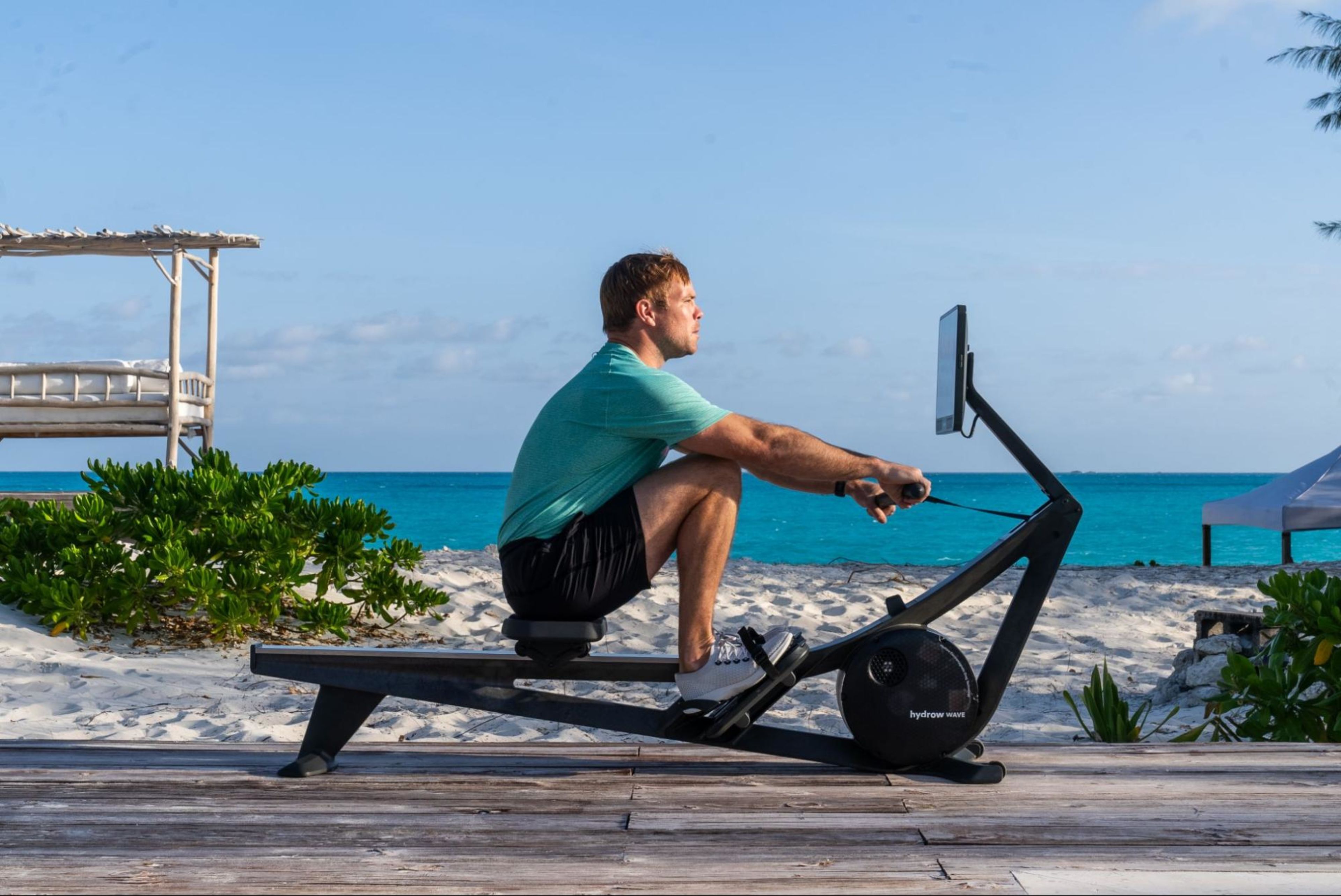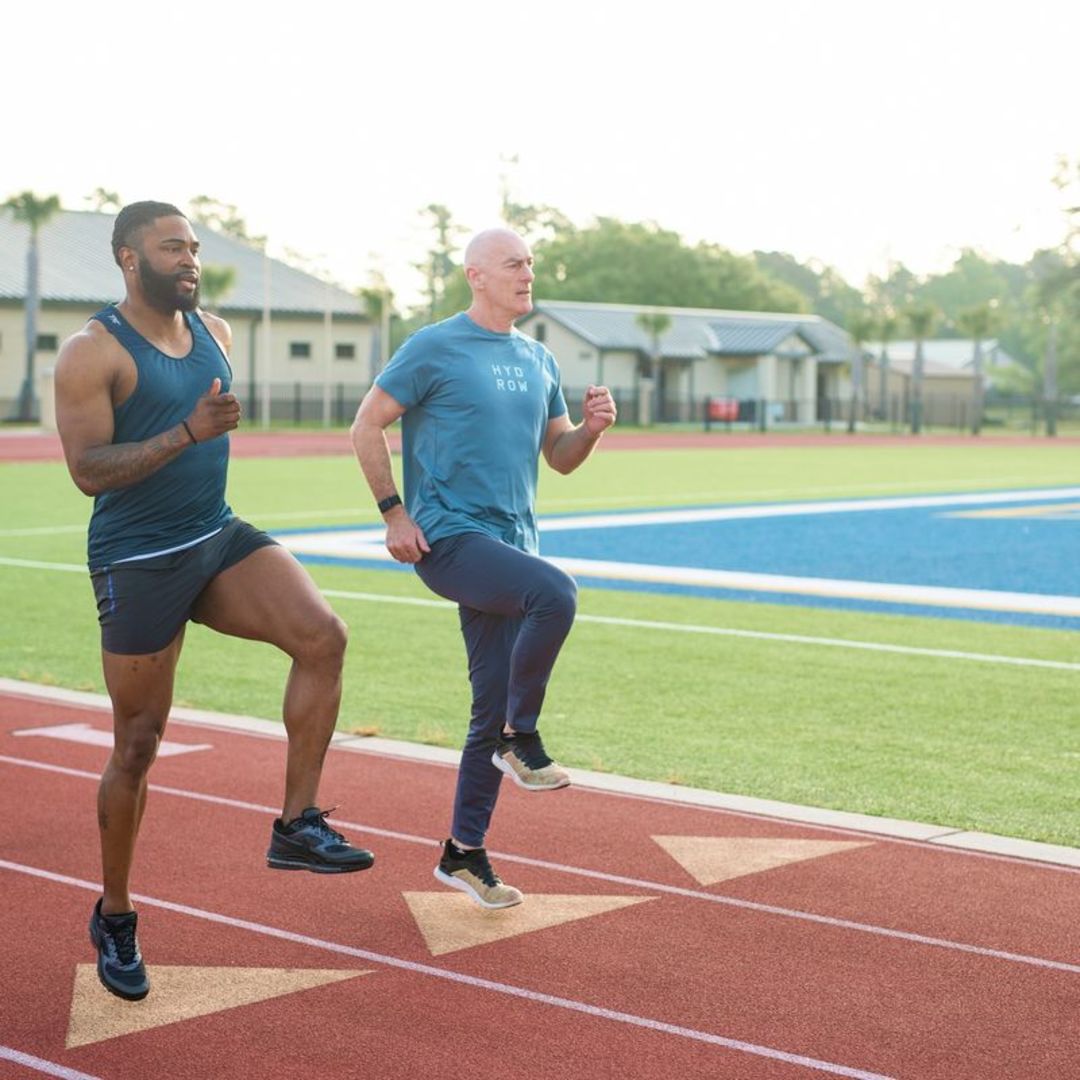Can You Do Full-Body Workouts Every Day?

Full-body workouts are an efficient and effective way to exercise. Full-body training makes it easy to plan a routine—just hit all the major muscle groups, and you’re good to go! And bonus: You won’t have any issues trying to remember whether it’s leg day or back day or which workout you’re supposed to be doing next.
The general fitness recommendation is to avoid working the same body parts two days in a row. However, many people often wonder if it’s okay to do a full-body workout every day.
Whether you should do a full-body workout every day depends on the type, or style, of workout you do. For example, a cardio workout that involves your full body, such as rowing, can be done every day. While it works all your muscle groups and can help build muscular endurance, the primary purpose of a cardio workout is to elevate your heart rate and strengthen your heart and lungs. However, it is not encouraged to do a full-body strength training workout every day, as this carries a higher risk of overuse injuries and burnout.
Here’s what you need to know about doing full-body workouts every day, including:
Let’s jump in!
What are full-body workouts?
You may have heard resistance training routines referred to as either a split routine or a full-body routine. While there is a wide variety of ways you can set up a split routine, the general premise is that you divide muscle groups or movement patterns into workouts on different days. This allows you to complete daily strength training sessions with optimal rest and recovery for your muscles.
In contrast, a strength training routine that involves all the major muscle groups in one workout session—including your back, chest, shoulders, core, glutes, and legs—is considered a full-body workout.
Some popular ways to get in a full-body workout include:
Rowing machines
Gym workouts for strength and cardio
Tabata cardio workouts

Holiday savings are here
Bring home our award-winning rowers at the best prices of the year.
The benefits of daily full-body workouts
Daily full-body workouts can certainly be challenging, but if planned out in a specific manner throughout the week, there are some benefits to consider:
They promote general fitness
Full-body workouts are a good way to ensure you’re building a balanced body by hitting all your body parts. Integrating a variety of light- to moderate-intensity and moderate- to vigorous-intensity workouts can help you attain a good general fitness level. A full-body routine builds total-body strength, incorporating functional strength that allows for ease in everyday movements. It is appropriate for those who want to build muscle and for those who just want to get moving regularly, improve their mobility, and stay fit and healthy.
They are efficient
When full-body workouts involve compound, or multi-joint movements, the workout is super efficient—the more muscles that are engaged in the exercise, the less time that is required for the workout. And, if you are completing a full-body strength program or high-intensity exercise, it’s suggested to integrate recovery or lower-intensity work on the days between your workouts. This ultimately frees up time in your day and week without compromising your results.
Full-body training with compound moves can even involve a bit of cardiovascular training since exercising multiple muscles at once can elevate your heart rate for an extended period of time.

What’s your workout style?
Take our quiz and get a customized 14-day training program.
They burn a ton of calories
Because you are engaging multiple large muscle groups at once, you’ll burn more calories both during and after your workout. Exercising daily also keeps your metabolism elevated, which can help with weight management and energy levels.
The drawbacks of daily full-body workouts
If you’re planning to engage in daily full-body training, it’s important to consider a few key concepts:
Specific fitness goals
If you have specific athletic or physique goals you’re training for, a split routine may serve you better by allowing you to direct your focus on individual body parts. Some sports, such as powerlifting or Olympic lifting, require an intensity level that isn’t sustainable for daily workouts. If those are your goals, you would be well advised to reconsider daily full-body workouts.
No recovery time
It is generally not advisable to work the same muscle groups two or more days in a row at high intensities. This kind of routine doesn’t allow for recovery time for your muscles. Strength workouts put stress on your muscles and cause muscle damage.
The body’s repair of these damaged muscle fibers is how you build strength and hypertrophy. The best time for this repair process to take place is during recovery time in between workouts. During this recovery time, lower-intensity full-body exercise, such as rowing, can be completed.
Potential injuries
Working the same muscle groups everyday can lead to repetitive or overuse injuries, particularly if you’re doing the same exercises every day. For example, doing the same style of squat for days or weeks at a time can lead to overuse injuries of the knees or lower back.
Also, not varying your workout enough can lead to specific muscle weaknesses that could cause injuries to joints, muscles, or connective tissues.
Safety tips for daily full-body workouts
If you decide that daily full-body workouts are the way to go for your fitness needs and schedule, there are some things to keep in mind to stay safe, healthy, and on the right track to reach your goals:
Vary your intensity levels
Exercising at high intensity levels every single day is a sure route to burnout, injuries and/or less-than-ideal performance. The rigors of daily exercise can be adjusted by varying your intensity levels and type of exercise from day to day. If you go hard, lift very heavy, or complete a HITT-style workout one day, complete a lower-intensity muscular endurance-style workout the next day. This enables proper muscle recovery from more intense work while allowing for daily full-body exercise.
Listen to your body
As with any exercise routine, listening to your own body is critical for maintaining health. You can better pinpoint when you need to rest by recognizing when you’re starting to feel run down, noting a twinge in your knee or shoulder, or noticing a strain in your hamstring.
Paying attention to non-exercise-related things like changes in appetite or sleep patterns is also important. Keeping a workout log in which you take note of things like this can be very helpful. And don’t hesitate to take rest days when needed. Rest and recovery is essential to good health and fitness!
Change up the exercises
Much like varying your intensity levels, changing up the individual exercises you're doing from day to day can minimize the chances of injury. It can also keep things interesting so you don’t get bored with your workouts.
Different exercises can target similar muscle groups in different angles and planes of motion. For example, a Romanian deadlift and a glute bridge are different exercises that work the same general muscle groups—your hamstrings, glutes, and lower back—but in different ways.
If cardiovascular exercise is part of your daily routine, mixing up the machines you use will add variety. For example, you could use a rowing machine one day and an elliptical machine the next.
Row your way to full-body fitness with Hydrow
Doing a daily full-body workout is not a one-size-fits-all situation. While it can enhance your general fitness and provide a time-efficient workout, it can also lead to injury and burnout if you’re not careful.
Take the time to consider your personal fitness level and your exercise goals. Balancing workout frequency, type of exercise, and intensity with adequate recovery will be the best way for you to achieve your goals, avoid injury, and be consistent with a regular fitness routine. This approach will allow you to create a sustainable fitness habit.
Looking for more guidance? Hydrow’s rowing machines combine smooth, natural movement with advanced coaching technology that helps you train smarter and stronger. Each stroke works 86% of your muscles, delivering a full-body workout that’s low-impact and efficient.
Beyond rowing, Hydrow offers an extensive library of off-the-rower classes—including strength, mobility, yoga, and more—to help you build balanced fitness that supports your everyday life.
Explore the benefits of Hydrow’s rowing machines and workouts today.

Real strength keeps moving
Learn how working out with Hydrow can help support a fuller, more active life.







